The Jacaranda Tree: [Characteristics, Planting, Care, Irrigation and Substrate]
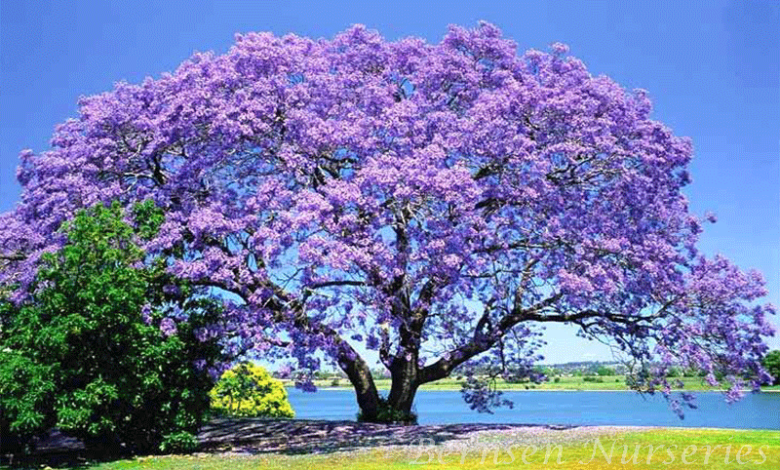
The first time someone sees a jacaranda tree (Jacaranda mimosifolia), they may think they have seen something out of a fairy tale.
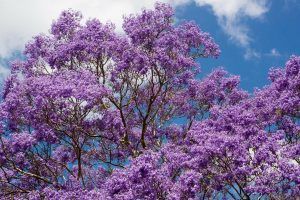
This lovely tree often spans the width of a front yard and is covered in beautiful lavender-purple flowers each spring.
Read on to find out how to grow a jacaranda tree if you have the right environment. The cultivation of jacarandas depends mainly on the right environment, since they are strictly southern trees.
Gardeners living further north often have success growing jacarandas as large houseplants, and they are known to make spectacular bonsai specimens.
Characteristics of the Jacaranda tree
| Botanical name: | Jacaranda mimosifoila. |
| Common name: | Jacaranda, Blue Jacaranda, Trumpet Tree. |
| Blade type: | Expires. |
| adult size: | Between 8 and 20 meters high. |
| Sun exposure: | full sun. |
| Floor type: | pH between 6.0 and 6.8 |
| Flowering time: | Spring and summer. |
| flower colour: | Purple and white. |
| Native area: | Argentina and Bolivia. |
| Usual use: | Ornamental. |
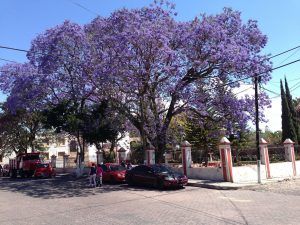
Jacaranda mimosifolia is a subtropical tree native to south-central South America that has been widely planted elsewhere for its attractive, long-lasting purple and white flowers.
It is also known as jacaranda, blue jacaranda, black poui or tree fern.
Older sources call it Jacaranda acutifolia, but today it is usually classified as Jacaranda mimosifolia.
In scientific use, the name «jacaranda» refers to the genus jacaranda, which has many other members, but in horticultural and everyday use, it almost always refers to the blue jacaranda.
The wood is pale gray to whitish, straight-grained, relatively smooth, and free of knots. It dries easily and is often used in its green or wet state for turning and carving bowls.
Where to plant my Jacaranda tree?
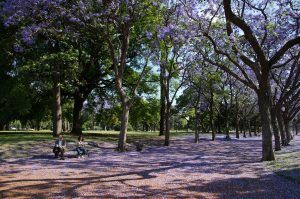
The jacaranda needs a lot of light.
For best flowering, plant the jacaranda in full sun. Small trees can live in light shade if necessary.
How do we prepare the land for the cultivation of Jacaranda?
The tree grows best in well-drained, moderately sandy soils with a slightly acidic pH. Tolerates clay, loam, and sand, but should not be planted in moist soil.
Make sure the soil drains properly, otherwise fungal root rot could develop.
How do we water the Jacaranda?
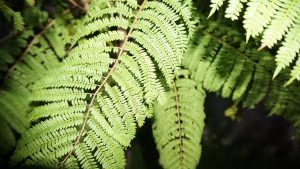
As a general rule of thumb, water your jacaranda tree when the top three inches of soil has dried out.
These trees need constant moisture throughout the year and often require additional watering during periods of high heat.
As usual in Sembrar100, we recommend drip irrigation as a system, since it allows maintaining high humidity levels, and at the same time prevents the roots from flooding; which leads to diseases and fungi.
What temperature and humidity levels are ideal for Jacaranda?
Some jacarandas can tolerate occasional cold (down to -6º C), but in general, this species does not thrive in climates with frequent frosts.
They like a lot of sun and moisture, but are vulnerable to trunk scald in areas with high temperatures. You have to think that this species is native to Bolivia and Argentina, where very cold temperatures do not prevail except in a few places.
The fertilizer we can use
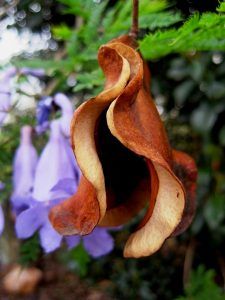
You can feed a jacaranda tree annually with a compatible tree fertilizer, but be careful not to give it too much nitrogen, which can prevent the tree from blooming.
If grass has grown around the tree and you clear the grass, chances are the tree is already getting a lot of nitrogen.
Plant the Jacaranda step by step
- Choose well the place where to place your tree. One piece of information about the jacaranda tree that many nurseries and catalogs don’t share is that when the flowers drop, they cover the ground in a thick layer and must be raked before they break down into silt. An afternoon rake will suffice, but this is why many jacarandas are planted as street trees, allowing most of the spent blooms to fall on the street rather than in the garden.
- Plant the tree in an open spot with sandy soil and in full sun.
- Keep the soil deeply moist by soaking it with a hose for half an hour, but letting it dry out between waterings.
- Caring for a jacaranda tree almost always includes pruning.
- To give it the best shape to show off its flowers, the smaller branches should be trimmed back in early spring.
- Cut back any suckers that grow vertically and keep a main trunk with a few main branches coming out of the center.
- Keep excess branches trimmed to prevent the weight of the tree from splitting the trunk.
Transplanting our Jacaranda tree
- What happens if we have our Jacaranda in a pot?
- How do we transplant them?
- When should we do it?
Good. We must look at the land where we plan to transplant and also its needs for sunlight, as we have indicated.
Jacarandas adapt very well to almost everything, since they can grow in a wide variety of soils; however, they especially prefer sandy and slightly acidic soils as indicated above.
Jacaranda trees are drought tolerant, but do not thrive in moist, boggy soil, so the soil must be fast-draining.
They should also not be grown in coastal areas, as their leaves suffer from salt spray from the sea.
Blue jacarandas can be transplanted in winter, after they shed their leaves but before bud break in early spring.
Pruning and care of the Jacaranda
Jacarandas should be pruned to form a single central trunk that serves as a stable base.
Excessive pruning of jacarandas can favor the appearance of vertical suckers that deform the tree.
Pruning should be done in late winter, after the tree has lost its leaves. Remove only 25% of the tree’s growth, including all broken and diseased branches, as more than that could cause sunburn.
Beware of this: Jacarandas should also be planted away from swimming pools, parking lots, playgrounds, and patios, as their flowers and leaves can create a lot of debris, which can rot intoslimy, smelly residue.
Pests and diseases that attack Jacarandas
What pests and diseases should we be careful with if we want our Jacarandas to grow healthy and vigorously?
The jacaranda, as we have said, is quite resistant to almost everything and adapts very well. Which makes this ornamental tree a good choice for many gardens and orchards.
However, it is not free of dangers. They can be affected by aphids, especially in new shoots, branches and flowers that appear as suckers: hence the importance of pruning.
In case aphids appear, use neem oil or potassium soap.
Finally and as always, excessive watering and waterlogging can cause the appearance of fungi, especially in the roots.
In case they appear, spraying with a homemade fungicide lotion can be ideal to stop the disease.
How long does the jacaranda live?
It has an estimated lifespan of 100 years, but this could increase if you get the right care.
How long does it take to grow the jacaranda?
It is possible to have an adult specimen between 5 and 7 years of life, since it grows rapidly.
How long does it take to produce fruit?
There is no exact time of fruit production for the jacaranda because everything depends a lot on the growing conditions.
Some connoisseurs of the matter estimate between 2 and 14 years after sowing.
Can it be grown in a pot?
Yes, you can grow the jacaranda in a pot, ensuring that it is of adequate proportions to protect its roots.
How many times does the jacaranda produce fruit?
It is a tree that becomes capable of producing fruit only once a year.
Should the jacaranda be pollinated to obtain fruit?
Yes, it should be pollinated. This process is carried out by pollinating insects and the well-known hummingbirds.
How many jacarandas can be planted per hectare?
A little more than 600 specimens per hectare can be planted, since it is a species that creates a wide crown.
How much heat and/or drought can the jacaranda tree tolerate?
Heat does not tend to be a problem in jacaranda cultivation, although it is best if temperatures do not approach 40°C.
If the temperature is very high, it may not tolerate prolonged drought.

![Photo of Prune an Holm Oak: [Importance, Time, Tools, Considerations and Steps]](https://www.complete-gardening.com/wp-content/uploads/2021/06/Podar-una-Encina-390x220.jpg)
![Photo of Fertilize Strawberries: How to do it? Because is good? [Homemade Compost]](https://www.complete-gardening.com/wp-content/uploads/2021/06/sembrar-fresas-5-1-390x220.jpg)

![Photo of Dimorfoteca: [Cultivation, Irrigation, Care, Pests and Diseases]](https://www.complete-gardening.com/wp-content/uploads/2022/08/dimorfoteca-cultivation-irrigation-care-pests-and-diseases-390x220.jpg)